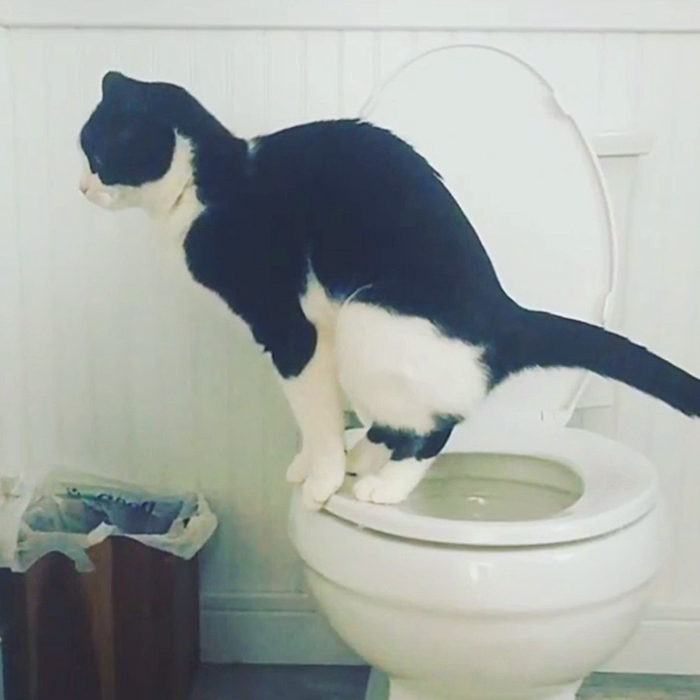Why Flushing Cat Poop Down Your Toilet Isn't a Good Idea - Advice for Safer Handling
Why Flushing Cat Poop Down Your Toilet Isn't a Good Idea - Advice for Safer Handling
Blog Article
Just about everyone maintains their own unique way of thinking involving Can You Flush Cat Poop Down The Toilet?.

Intro
As feline proprietors, it's essential to be mindful of exactly how we throw away our feline pals' waste. While it may seem hassle-free to purge feline poop down the commode, this technique can have detrimental consequences for both the atmosphere and human health and wellness.
Environmental Impact
Purging pet cat poop presents unsafe pathogens and parasites into the water supply, posturing a substantial danger to aquatic ecological communities. These pollutants can negatively affect marine life and compromise water quality.
Health and wellness Risks
Along with environmental problems, flushing cat waste can likewise present health and wellness risks to human beings. Feline feces may have Toxoplasma gondii, a parasite that can cause toxoplasmosis-- a potentially serious ailment, especially for expecting ladies and people with weakened immune systems.
Alternatives to Flushing
Fortunately, there are more secure and a lot more responsible means to dispose of pet cat poop. Think about the following choices:
1. Scoop and Dispose in Trash
The most typical approach of taking care of cat poop is to scoop it into an eco-friendly bag and toss it in the trash. Make sure to make use of a dedicated trash inside story and dispose of the waste immediately.
2. Usage Biodegradable Litter
Choose naturally degradable feline trash made from materials such as corn or wheat. These clutters are eco-friendly and can be securely taken care of in the garbage.
3. Bury in the Yard
If you have a yard, take into consideration hiding cat waste in a marked location far from vegetable gardens and water resources. Be sure to dig deep sufficient to stop contamination of groundwater.
4. Set Up a Pet Waste Disposal System
Invest in a pet dog waste disposal system particularly developed for cat waste. These systems utilize enzymes to break down the waste, lowering smell and ecological impact.
Final thought
Responsible pet dog ownership extends past offering food and shelter-- it additionally includes appropriate waste monitoring. By refraining from purging pet cat poop down the bathroom and choosing different disposal techniques, we can lessen our ecological footprint and secure human health and wellness.
Why Can’t I Flush Cat Poop?
It Spreads a Parasite
Cats are frequently infected with a parasite called toxoplasma gondii. The parasite causes an infection called toxoplasmosis. It is usually harmless to cats. The parasite only uses cat poop as a host for its eggs. Otherwise, the cat’s immune system usually keeps the infection at low enough levels to maintain its own health. But it does not stop the develop of eggs. These eggs are tiny and surprisingly tough. They may survive for a year before they begin to grow. But that’s the problem.
Our wastewater system is not designed to deal with toxoplasmosis eggs. Instead, most eggs will flush from your toilet into sewers and wastewater management plants. After the sewage is treated for many other harmful things in it, it is typically released into local rivers, lakes, or oceans. Here, the toxoplasmosis eggs can find new hosts, including starfish, crabs, otters, and many other wildlife. For many, this is a significant risk to their health. Toxoplasmosis can also end up infecting water sources that are important for agriculture, which means our deer, pigs, and sheep can get infected too.
Is There Risk to Humans?
There can be a risk to human life from flushing cat poop down the toilet. If you do so, the parasites from your cat’s poop can end up in shellfish, game animals, or livestock. If this meat is then served raw or undercooked, the people who eat it can get sick.
In fact, according to the CDC, 40 million people in the United States are infected with toxoplasma gondii. They get it from exposure to infected seafood, or from some kind of cat poop contamination, like drinking from a stream that is contaminated or touching anything that has come into contact with cat poop. That includes just cleaning a cat litter box.
Most people who get infected with these parasites will not develop any symptoms. However, for pregnant women or for those with compromised immune systems, the parasite can cause severe health problems.
How to Handle Cat Poop
The best way to handle cat poop is actually to clean the box more often. The eggs that the parasite sheds will not become active until one to five days after the cat poops. That means that if you clean daily, you’re much less likely to come into direct contact with infectious eggs.
That said, always dispose of cat poop in the garbage and not down the toilet. Wash your hands before and after you clean the litter box, and bring the bag of poop right outside to your garbage bins.
https://trenchlesssolutionsusa.com/why-cant-i-flush-cat-poop/

I hope you liked our topic on Don’t flush cat feces down the toilet. Thanks a lot for taking the time to browse our article. Are you aware of someone else who is intrigued by the topic? Do not hesitate to share it. Thanks for your time invested reading it.
Try Here Report this page